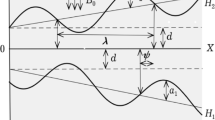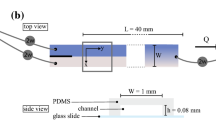Abstract
Are solids intrinsically different from liquids? Must a finite stress be applied in order to induce flow? Or, instead, do all solids only look rigid on some finite timescales and eventually flow if an infinitesimal shear stress is applied? Surprisingly, these simple questions are a matter of debate and definite answers are still lacking. Here we show that solidity is only a time-scale dependent notion: equilibrium states of matter that break spontaneously translation invariance, e.g. crystals, flow if even an infinitesimal stress is applied. However, they do so in a way inherently different from ordinary liquids since their viscosity diverges for vanishing shear stress with an essential singularity. We find an ultra-slow decrease of the shear stress as a function of the shear rate, which explains the apparent yield stress identified in rheological flow curves. Furthermore, we suggest that an alternating shear of frequency ω and amplitude γ should lead to a dynamic phase transition line in the (ω,γ) plane, from a ‘flowing’ to a ‘non-flowing’ phase. Finally, we apply our results to crystals, show the corresponding microscopic process leading to flow and discuss possible experimental investigations.
Similar content being viewed by others
References
Edgeworth, R., Dalton, B.J., Parnell, T.: Eur. J. Phys. 198 (1984). See also http://www.smp.uq.edu.au/pitch/
Barnes, H.A.: J. Non-Newtonian Fluid. Mech. 81, 133 (1999)
Chaikin, P.M., Lubensky, T.C.: Principles of Condensed Matter Physics. Cambridge Univ. Press, Cambridge (1995)
Anderson, P.W.: Basic Notion of Condensed Matter Physics. Westview Press, Boulder (1997)
Balibar, S., Alles, H., Parshin, A.Ya.: Rev. Mod. Phys. 77, 317 (2005)
Pantalei, C., Rojas, X., Edwards, D.O., Balibar, S.: J. Low Temp. Phys. (2010). doi:10.1007/s10909-010-0159-6
Noda, A., Kohiro, K., Oda, O.: J. Electron. Mater. 25, 1841 (1996)
Hirth, J.P., Lothe, J.: Theory of Dislocations. McGraw-Hill, New York (1968)
Duez, C., Ybert, C., Clanet, C., Bocquet, L.: Nat. Phys. 3, 180 (2007)
Debenedetti, P.G.: Metastable Liquids. Princeton University Press, Princeton (1996)
Langer, J.S., Ambegaokar, V.: Phys. Rev. 164, 498 (1967)
Langer, J.S., Fisher, M.E.: Phys. Rev. Lett. 19, 560 (1967)
Buchel, A., Sethna, J.P.: Phys. Rev. Lett. 77, 1520 (1996)
Bruinsma, R., Halperin, B.I., Zippelius, A.: Phys. Rev. B 25, 579 (1982)
Dahm, A.J., Stan, M.A., Petschek, R.G.: Phys. Rev. B 40, 9006 (1989)
Lyuksyutov, I.F., Pokrovsky, V., Nattermann, T.: Phys. Rev. B 59, 4260 (1998)
Barnes, H.A., Hutton, J.F., Walters, K.: An Introduction to Rheology. Elsevier, Amsterdam (1993)
Bavaud, F., Choquard, Ph., Fontaine, J.R.: J. Stat. Phys. 42, 621 (1986)
Williams, S.R., Evans, D.J.: J. Chem. Phys. 131, 024115 (2009)
Schall, P., Cohen, I., Weitz, D.A., Spaepen, F.: Nature 440, 319 (2006)
Bray, A.J.: Adv. Phys. 43, 357 (1994)
Hébraud, P., Lequeux, F.: Phys. Rev. Lett. 81, 2934 (1998)
Bocquet, L., Colin, A., Ajdari, A.: Phys. Rev. Lett. 103, 036001 (2009)
Sausset, F., Biroli, G., Kurchan, J.: in preparation
Liu, A.J., Nagel, S.R.: Nature 396, 21 (1998)
Korniss, G., White, C.J., Rikvold, P.A., Novotny, M.A.: Phys. Rev. E 63, 016120 (2001)
Lothe, J., Hirth, J.P.: Phys. Rev. 115, 543 (1959)
Mézard, M., Yoshino, H.: arXiv:1003.3039
Author information
Authors and Affiliations
Corresponding author
Rights and permissions
About this article
Cite this article
Sausset, F., Biroli, G. & Kurchan, J. Do Solids Flow?. J Stat Phys 140, 718–727 (2010). https://doi.org/10.1007/s10955-010-0006-9
Received:
Accepted:
Published:
Issue Date:
DOI: https://doi.org/10.1007/s10955-010-0006-9




